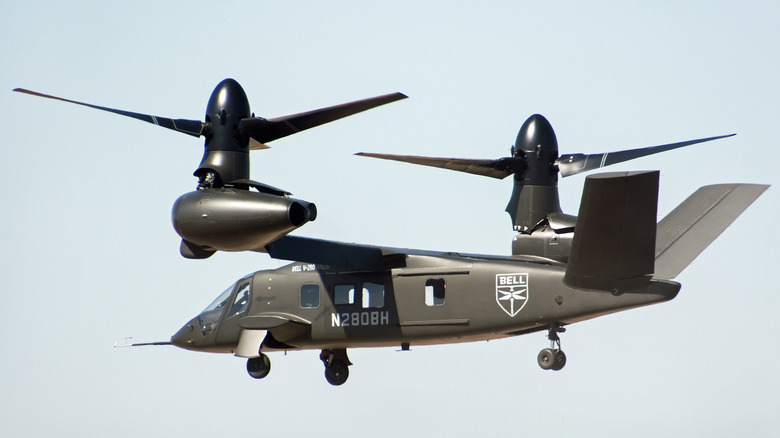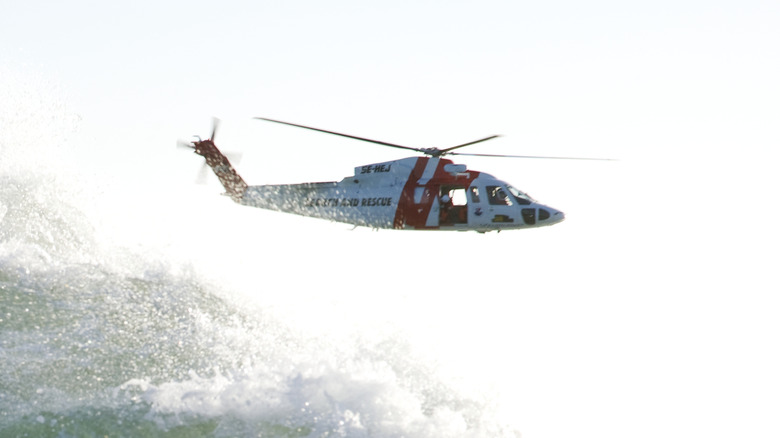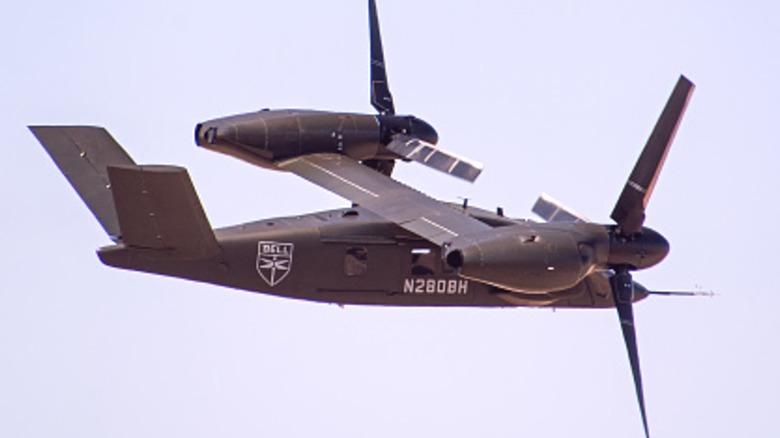The US Navy Is Replacing Its MH-60 Seahawks With These Army Military Choppers
In 2013, Bell Helicopter teamed up with Lockheed Martin to unveil its newest aircraft under development, the V-280 Valor. Four years later, it took to the air, and in 2022, the U.S. Army decided to use the V-280 as its new Future Long-Range Assault Aircraft (LRAA) program, which would replace the Sikorsky UH-60 Black Hawk helicopter. This was big news, as the V-280 represents the next generation of military vertical take-off and landing (VTOL) helicopters.
Currently, the military uses the V-22 Osprey, which has several notable strengths and weaknesses. The V-280's design intends to use the lessons learned from the V-22 by creating something new for modern military operations. The U.S. Army's helicopter fleet is rather large, but it's not the only service to use choppers. The Navy has been using the Sikorsky MH-60 Seahawk, a variant of the UH-60 designed specifically for naval use, since it was first introduced in 1984. The service operates 270 MH-60Rs and 256 MH-60Ss, so it's a workhorse helicopter.
The MH-60 family of systems is nearing the end of its lifecycle, and the service is eyeing the Army's new toy as a viable replacement. In April 2005, the Navy made that decision, but it's not as simple as placing an order with Bell; Navy helicopters must operate in entirely different environments than Army choppers, so the Navy will work with the contractor to develop something specific for the service while piggybacking on the work the Army has done thus far.
The MH-60 Seahawk
While the U.S. Army gets a lot of attention for its massive fleet of helicopters, the Navy is no slouch in that area. The MH-60 is as much a workhorse for the Navy as its cousin, the UH-60, is for the Army. The MH-60 can land and take off from almost every type of naval surface vessel, making it incredibly versatile. It's used for combat search and rescue, marine search and rescue, vertical replenishment, medical evacuation, and more. Still, one of its primary uses is for anti-submarine warfare.
They've been serving since the early 1980s and have been involved in various combat actions throughout the decades. The aircraft itself measures 17 feet high and 64 feet, 8 inches long, though its fuselage measures only 50 feet in length. At its maximum cruise altitude of 5,000 feet, the MH-60 can fly up to 155 mph for three hours on station up to 50 miles away or as far as 150 miles if only one hour on station. The helicopter is powered by two General Electric T700-GE-401 turboshaft engines and is incredibly reliable.
While not an attack helicopter, per se, the MH-60 and its variants are more than capable of carrying a variety of ordnance and weapons systems into combat. Depending on its configuration, the MH-60 can be outfitted with a crew-served machine gun, a 20mm gun system, Advanced Precision Kill Weapons System (APKWS), which is a laser-guided munitions kit used to upgrade existing ordnance, the Mk. 54 anti-submarine torpedo and Hellfire air-to-surface missiles.
The Bell V-280
The development of the Bell V-280 has been ongoing for over a decade, and testing is planned for the late 2020s. The Army should begin to receive the new VTOL aircraft sometime in Fiscal Year 2031, and the Navy will likely receive them sometime after that. Navy Rear Adm. Michael "Buzz" Donnelly, head of the Air Warfare Division, discussed the new aircraft acquisition plans at the Navy League's Sea Air Space 2025 exhibition on April 7, 2025.
Donnelly said, "We'll definitely continue to leverage what we are [sic] already teamed with the Army [on] for FLRAA." (via The War Zone). The aircraft is still being developed, but as of early 2025, it boasts a range of up to 920 miles and can reach speeds of up to 320 mph. It's powered by two Rolls-Royce AE 1107F turboshaft engines, and it can carry up to 14 troops. Its tiltrotor technology keeps the engines stationary while the drive shafts tilt, adding a layer of safety unmatched by the V-22, which tilts its engine nacelles for forward flight and hover modes.
The goal is to design a new aircraft based on existing and burgeoning technology so two Future Vertical Lift-Maritime Strike (FVL-MS) aircraft can fit aboard any cruiser or destroyer-type vessel. The continued move toward tiltrotor aircraft like the V-280 is unlikely to lessen as services embrace them for their speed and versatility. As development continues, the Marine Corps has shown interest in the FLRAA, and it could replace its V-22 fleet with the V-280 or a variation designed specifically for the service's use.


